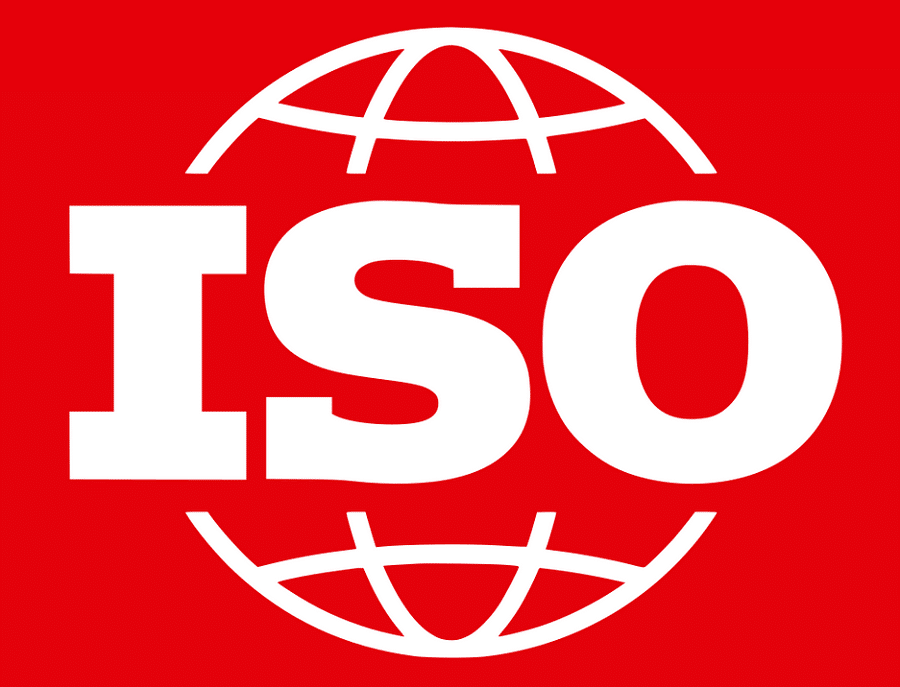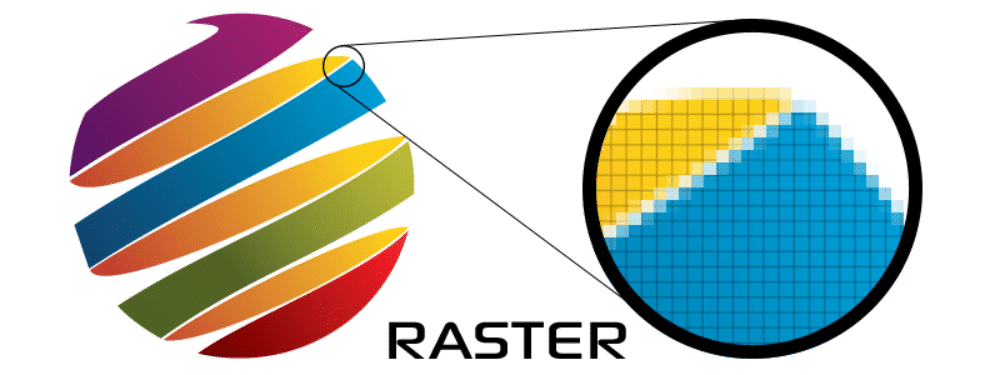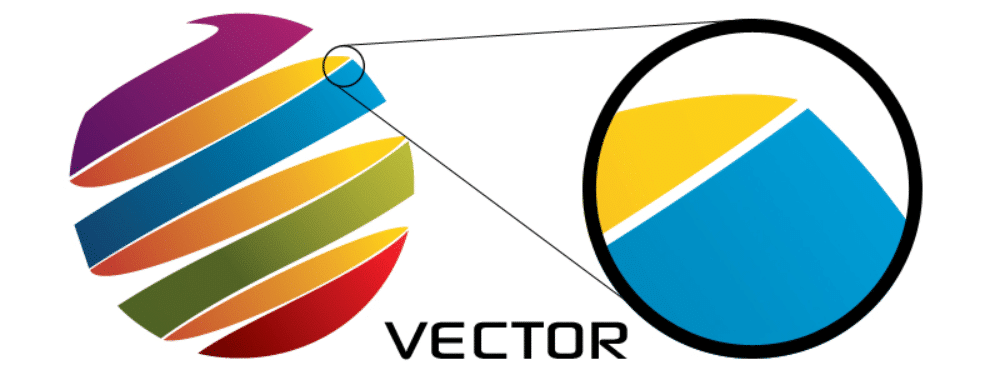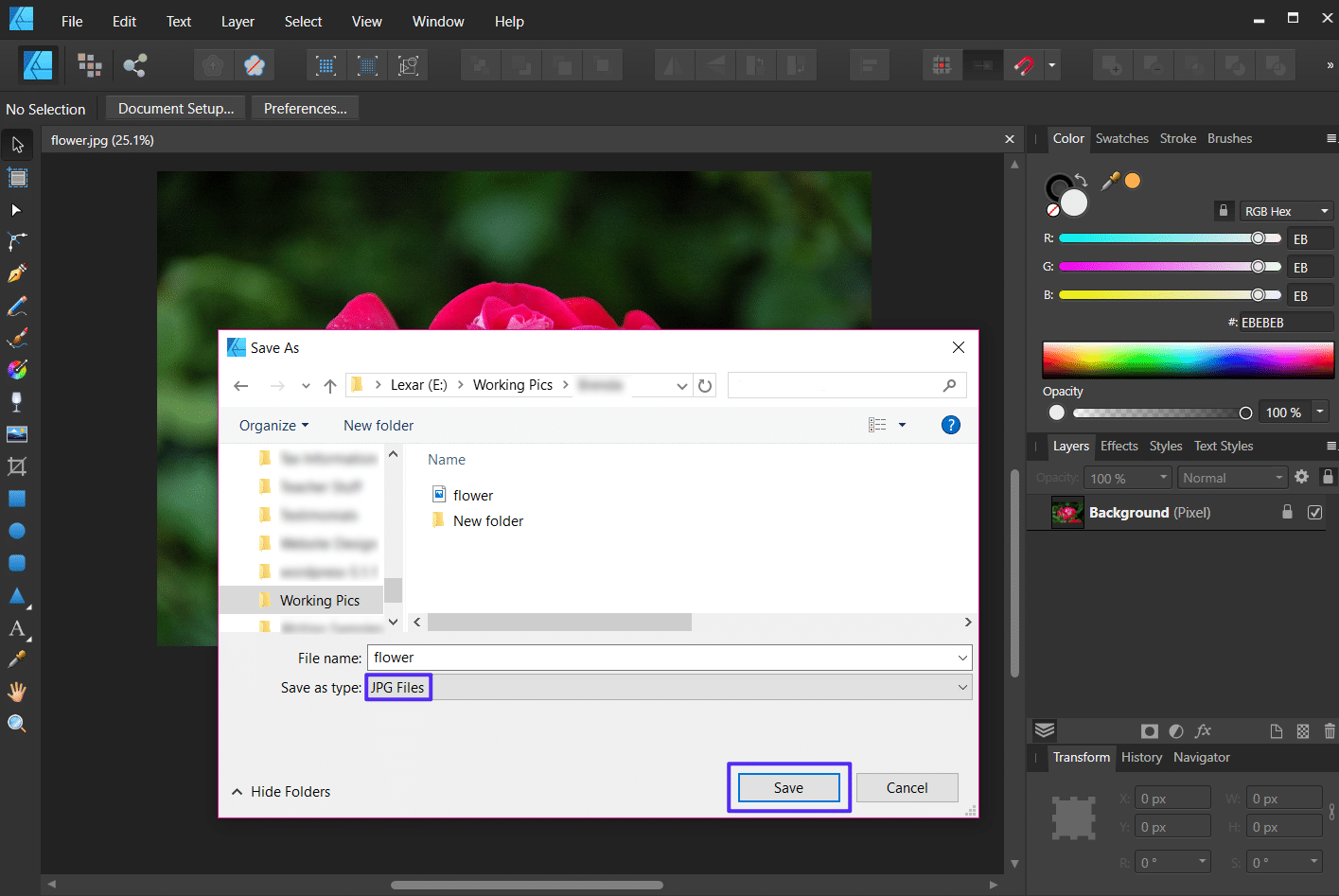convert-png-to-jpeg
convert to png
JPG vs JPEG: Understanding the Most Common Image File Format
Website owners have to deal with images all the time. Although you don't need to be an expert on image files to edit images and upload them to a website You should be familiar with the most common formats for files such as JPEG. Or is it JPG?
In this post, I'll show an JPG comparison with a JPEG presentation to help you better understand what the differences are, as as other details that will aid you in uploading the highest quality images you can to your website to provide the best user experience. If your looking for more in-depth information on the latest .webp format there's a guide for you too.
Ready? Let's get started!
Table of Contents
- What is JPEG?
- What is JPG?
- JPG vs JPEG: Similarities Between the Two
- JPG vs JPEG 2000
- Convert Image Files to JPG: Common Methods
convert to jpeg
If you are a webmaster working with images, you've most likely come across that file-format JPEG in the past in your uploading and editing adventures.
But did you realize that the word JPEG refers to a term used to refer for three different items?
That's right, and we're here in order to clarify all of them:
1. JPEG Lossy Compression
When you upload images to your site, it's important you ensure that you don't negatively affect the speed and performance by using massive images that consume resources and take forever in loading on the front end of your site. In reality, all site administrators should optimize their websites in some manner to minimize the file sizes of their pictures and maintain loading times and the user experience.
That's the point where JPEG can come in handy. JPEG is the lossy compression method employed to make sure that the digital images being used are as small as they can be and load fast when someone needs to see them.
Here are some things to consider about lossy compression:
- The size of the image compressed is constantly reduced by eliminating redundant ( redundant) informationfrom the image.
- The quality of images can be a problem even though the difference is often such that the average visitors aren't able tell.
- When compression is being performed, every pixel in the compression process is compared against its neighbors in a ratio of 2:1 all the way all the way to 100 times one ( any pixels that have the same characteristics as the original pixel are then eliminated as they are deemed ineffective).
- JPEG lossy compression is generally employed for photographsand more complex still images.
- If you are compressing an image using lossy compression you will determine its size and performance tradeoff ( e.g., smaller files are less quality).
- In the longer you save and edit an photo you make and save, the less professional the image of the image will be.
If you're experienced with editing images with lossy compression, there is the chance that you could save the image's quality and reduce the size of your file using RAW JPEG images, making edits, and saving the image one time.
convert to bmp
If you're not keen to use JPEG lossy compression on your site's images, there's always the alternative lossless compression.
Lossless compression allows your images to be saved in a totally various formats ( usually PNG). Although image quality is never sacrificed because it is not the case that information is removed, remember that even with lossless compression, the final file dimensions of the image you upload will be larger than that of lossy compression. This may lead to longer loading times on your page.
2. Joint Photographic Experts Group (JPEG)
JPEG is the acronym for Joint Photographic Experts Group, that's the name of the sub-committee who helped develop the JPEG standard as well as the other standards for still picture coding in the larger ISO group. ISO.
The first JPEG standard was introduced as of the year 1992. ISO ( International Organization for Standardization). ISO are responsible for creating standards to "...provide requirements standards, specifications, guidelines or other characteristics that can be utilized consistently to verify that the materials, products, processes, and services are fit to serve their purpose."
ISO establishes standards for various things which includes digital images as a way of providing customers and clients with best quality products and services. 
Image source: Wikimedia Commons
This is an international free association of members from more than 164 countries which makes it the largest in the world for development of standards.
3. JPEG as a File Format
The final way that the term JPEG can be used is when it refers to a name for a file format or a way to store and save digital images. This is the most likely way that you're most familiar with JPEG because it's one of the formats for file options when you create an image and save it after you've edited it. 
JPEG file format
Here are some interesting facts about and the .jpeg file format:
- The most common image form used by digital camera as well as other imaging devices.
- Supports 16,777 colors. are produced using 8 bits of each color in the RGB colour model.
- Can display greater than 16 millions colors simultaneously and make the combination of color and nearly perfect.
- Supports a maximum size of 65,535 pixels x 65,535 pixels.
- The size is reduced of an image approximately 50-75% ( because of lossy compression) after saving
Finally, this file format isn't ideal for images with sharp edges as the colors mix more than in .png format, which displays individual pixels in a mixture.
So, let's now find out what JPG is.
What is JPG?
What in the world is JPG relative against JPEG? 
Extensions for files in Windows
It's true that when it comes to .jpeg vs .jpg there is no difference. there is no difference between themexcept the amount of characters.
Crazy right? Let us explain.
The term JPG originates from the earlier versions of Windows operating systems. Specifically, the MS DOS 8.3 as well as FAT-16 system included a maximum limit of 3 letters in file names, unlike the UNIX-like operating systems like Mac or Linux that didn't have this limitation.
Also, on Mac and Linux systems images saved as JPEGs included the file extension .jpeg. However, when saving those same types of images using Windows, the file extension had had to be changed to .jpg so it didn't exceed the limit of 3 letters.
Today, Windows operating systems accept 3- or 4-letter file extensions such as .jpeg or .jpg. Because so many users are using Windows for quite a while, and are accustomed to saving their photos as JPGs and JPGs, they've not stopped. As a result, photo editing software like Adobe Photoshop and GIMP save all JPEG images by default to the .jpg file extension for all platforms, including Windows or Macs to avoid confusion.
JPG vs JPEG: Similarities Between the Two
You're aware there's a difference between .jpeg and .jpg files are exactly the identical file. To bring that idea home and ensure you keep it in mind for the future, we'll examine the similarities between JPEG or JPG images.
1. Both Are Raster Images (Not Vector Images)
Computer images can be generated using vector or raster images. In the same way, since JPEGs are raster images, the same applies to JPGs.
Raster graphics are bitmaps of images. A bitmap is a grid of tiny pixels that when put together make up an image. In another way, raster images are made up of miniature squares ( or pixels) of color each coded in a specific hue or shade . These when joined together make an image that is easy to view. 
Image source: PrintCNX
Here's more information about raster images to help you understand:
- Most suitable for images with no lines such as photographs or scans of artwork or intricate graphics.
- They display subtle hues or shade gradations and very undefined lines and shapes.
- Due to their Pixel-based nature they suffer quality issues when blown in size ( they become jagged and expose the individual pixels).
- They are defined as being displayed at a single resolution. Resolution is measured in dots per inch ( dpi).
- The higher the dpiis, the better the resolution as well as the aesthetic appeal of the image.
- The most common raster file formats are: TIFF, JPEG, GIF, PCX and BMP files.
- Raster images can be described as considered to be the Web standard, which means that they are used for all images on the internet.
For the record, JPEGs or JPGs are not vector images. 
Image source: PrintCNX
Here's some information about vector images so you're able to recognize the difference:
convert-to tiff
Want to know how we increased traffic by more than 1000 percent?
Join over 20,000 other users who receive our weekly newsletter with insider WordPress tricks! Sign up Now!
- Images are based on mathematical formulas that define geometric forms such as lines, polygons or curves, circles and rectangles.
- Perfect for straight-edged images , such as line art.
- Since there aren't any color gradients, they work for flat and uniformly colored images.
- Incorporate popular graphics like letters, logos, and fonts.
- Scale up or decrease without any loss of quality because they don't rely on pixels to make the image whole.
2. Both Terms Mean the Same Thing
Did you remember when we talked about the term JPEG and the way it stood for Joint Photographic Experts Group? The answer is yes that each JPEG and JPG are abbreviations for that same ISO sub-committee.
3. Both Are Used for the Same Image Types
Since they are raster images as opposed to vectors, they both .jpeg and .jpg file formats can be used for digital photography. Digital photographs have extensive color gradations which appear seamless when stored as raster JPEG/JPG files. This means your site visitors will always see a beautiful photograph if it's saved as a .jpeg/.jpg or uploaded on your website.
Find out more about image file types and how they impact your site.
4. Both Lose Some Quality When Saved
Because the .jpeg vs .jpg comparison is ineffective ( because they are exactly the same) so it is reasonable to assume that the compression method employed on both file formats -- lossy compression-- can result in a decrease in image quality as the file size of the image decreases.
In addition, this means that no matter which file extension you are using ( either .jpeg or .jpg), your image's file size will be smaller than it had been originally, and this will result in faster loading times when you upload your image to your website to be users visit your site.
In the final analysis, JPEGand JPGs are the same and serve several main functions in order to reduce the size of images to allow for better viewing on the web and allow users to compress their images upon saving and name the file using a common extension that is recognised by a large number of.
Consider: JPG vs JPEG Which is superior? From there, don't get too involved because the answer is neither. They're both the same. whichever one you choose, is only a matter your preference.
JPG vs JPEG 2000
If you've ever been searching for information regarding JPEGs and JPGs then you've likely seen the phrase JPEG 2000and wondered what in the world this was. Since it's an option available in the majority of photo editing programs.
JPEG 2000 was an image encoder system developed by the Joint Photographic Experts Group in 2000. The JPEG 2000 standard was designed to be superior to the JPEG standard that was in place. In reality, it was created to implement lossless compression on Images with the use of advanced compression techniques using a discrete wavelength transformation.
If you're uploading plenty of images and pictures to your site, you don't want to deliver the slow page to your visitors right? We provide blazing fast servers and 24x7 assistance through WordPress experts. Find out more about our plans
It allowed people to make their photos more efficient and save them as JPEGs, without degrading the quality of the image.
Here are a few of the main features in JPEG 2000:
- Advance Compression Strategies:unlike conventional JPEGs, JPEG 2000 could use lossy and lossless compression ( even on a single image file).
- Progressive Decoding:enables viewers to view the quality of an image, even as the entire process of downloading at a background. As more data is downloaded you can see the image's quality increase for the user.
- Higher Compression Ratioswhen it is about lossy compression JPEG 2000 can compress an image up to 20-200 percent higher than JPEG and still maintain the same image quality in comparison to an JPEG image with the same dimensions.
In addition, JPEG 2000:
- It preserves the transparency of images.
- Can describe bi-level, grayscale pallet-color, full-color image data.
- This includes unlimited amounts of personal or specific-purpose information within metadata.
- It can handle larger sizes of images ( greater than 64K x 64K pixels), with no tilting.
- Ultra-low latency is particularly beneficial for live TV.
- Scalability both in resolution and quality.
JPEG 2000 Limitations
Though JPEG 2000 is packed with amazing features and appears to be the next most efficient quality digital image coder There are a few reasons it's not one of the file formats that is popular with many people:
- No worldwide browser support ( only supports Safari).
- Incompatible to JPEG ( must encode the new standard, and also support original JPEG).
- Encoding JPEG 2000 files can be very CPU-intensive, and can cause server strain and slow things down.
- Some cameras and sites do not yet have the capacity to support this format as it isn't widely accepted.
Due to its limitations you'll be hard-pressed to find an alternative to the JPEG 2000 file format as an option when saving your digital images. While it's better than JPEG, until it is accepted by everyone, you'll likely run into a variety of compatibility problems, making your job as a website owner than it needs to be.
Convert Image Files to JPG: Common Methods
There are plenty of ways for you to store your electronic photos in .jpg as well as .jpeg files. Let's explore some.
1. Windows Paint
If you're running Windows, you can easily save any image in .jpeg or .jpg using Windows Paint. Simply upload your image to Windows Paint, go to the File menu, selectand then save as select the desired file destination, name your photo, and then select JPEG (*.jpg, *.jpeg, *.jpe, *.jfif)from the drop-down options. 
Windows Paint
Click "Save..
2. Affinity Designer
Affinity Designer works similarly to other image editing software such as Adobe Photoshop. To save images as JPG, you must first save it as JPG with a software such as this, start by opening the program and uploading your image. Make any changes you wish to make and click "Filethen Export.... Next, click on from the JPEG icon, choose what quality ( best, high medium, or even low), and click to export. 
Affinity Designer
If you do this it, The saving As dialog will appear so that you can select a destination, name your image, and again ensure that you are saving the image as a JPG. 
"Save as" in Affinity Designer
Click Save.
3. Online Converter Tool
If you're looking to convert images to JPG there are plenty of free online jpg converters to help. For example, FileZigZag is a free online file converter that's easy to use. Simply drag and drop an photo file or upload it then select the format for the image to be converted and then enter an email address, and click "Convert.". 
Convert PNG to JPEG FileZigZag
Of course, you might not wish to provide your email address in exchange for converting your image into a JPG. That's why we've rounded up several other premium and free solutions for you to check out:
- XnConvert : perfect for advanced image editors that need lots of image file formats, the capacity to bulk convert and also use Windows, Mac, or Linux.
- Zamzar :a free online tool for people with huge image files ( up to 50MB) with the option of having the final image emailed or not.
- The adapter : a simple image converter that works with batch images. It can convert them instantly and works with macOS and Windows.
Of obviously, these are some of the options you have if you want to convert images to JPG.JPG vs JPEG: What's the difference? What's with JPEG 2000? Find the answer (and more) in our extensive guide! CLICK TO TWEET
Summary
JPG in contrast to JPEG are the most popular formats and methods of compression for people looking to store the digital pictures. This is especially important for website owners that want to showcase visually appealing images while ensuring a high-quality user experience.
There's good news for you: no which of .jpeg, .jpg or .webp file types, you're guaranteed be able to achieve the same result: beautiful images that are loaded extremely quickly for site users.
Save time, costs and improve site performance by:
- Help is available immediately Instant assistance from WordPress hosting experts, 24/7.
- Cloudflare Enterprise integration.
- Global audience reach with 28 data centers located around the world.
- Optimization using Our built-in Application for Performance Monitoring.
All of that and much more, in one plan with no long-term contracts, assisted migrations, and a 30-day-money-back-guarantee. Explore our plans and chat with sales to discover the plan that's right for you.
Make use of this tool compress image
Comments
Post a Comment